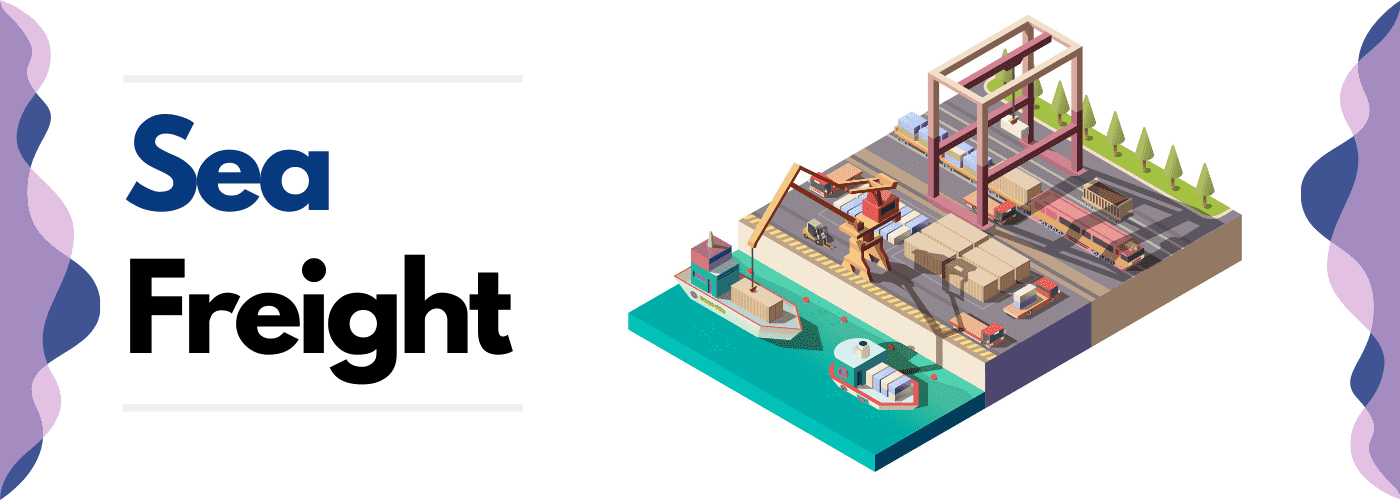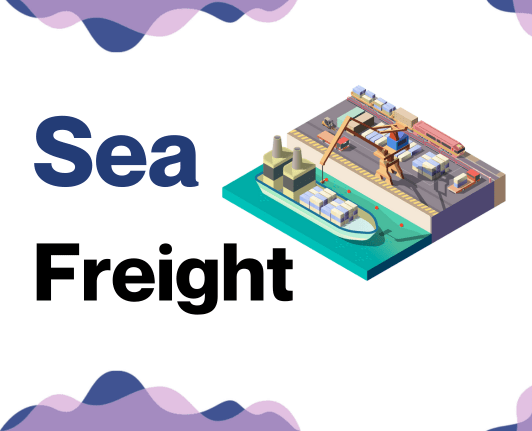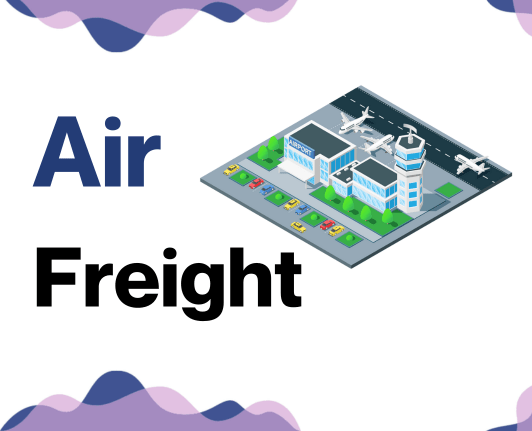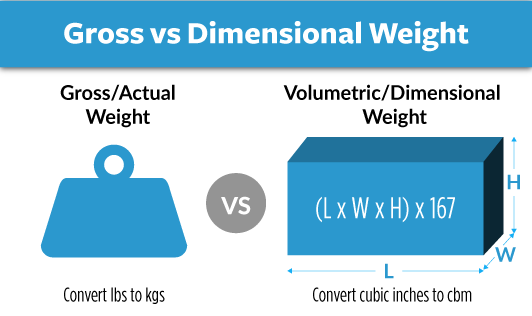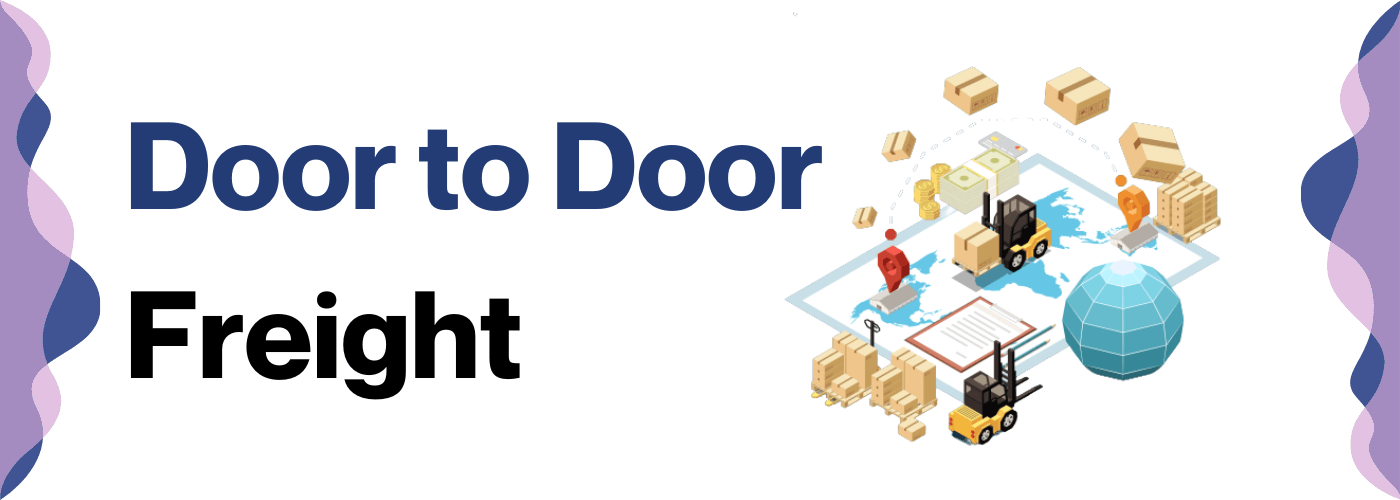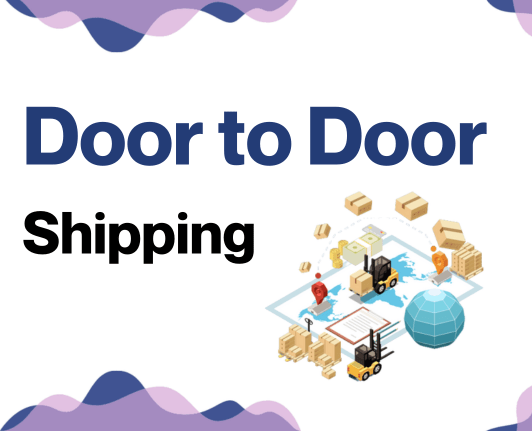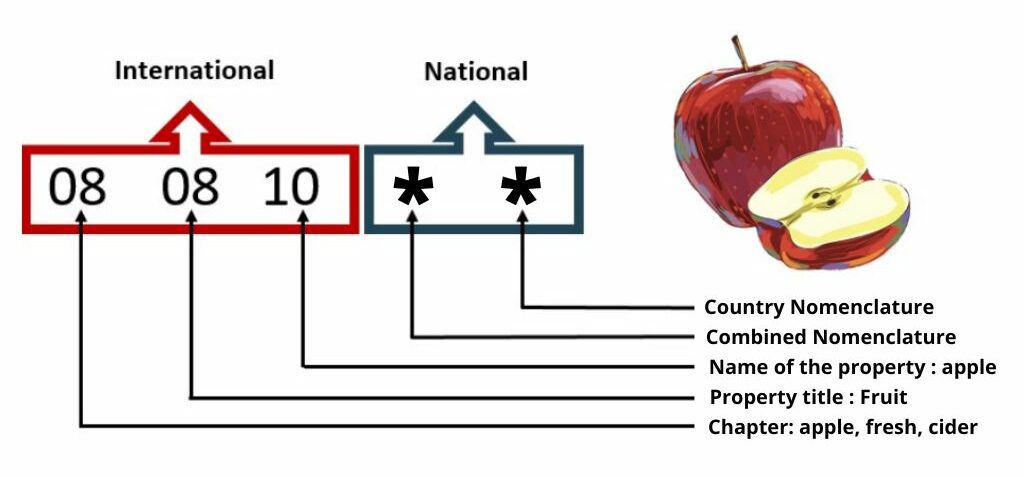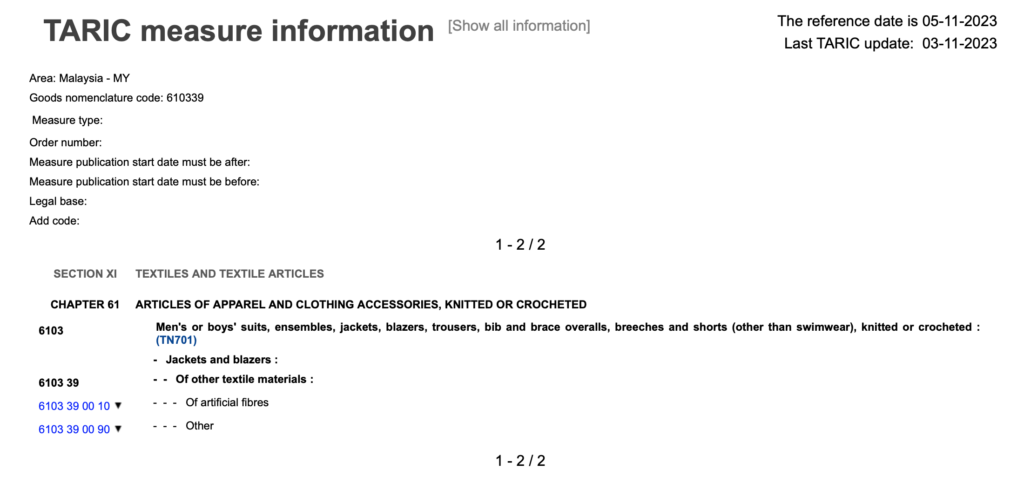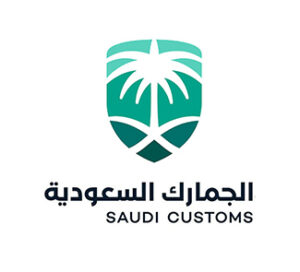Who knew shipping freight between Malaysia and Saudi Arabia could feel as complex as explaining why cats love boxes? Well, the struggle is real, particularly when it involves comprehending rates, calculating transit times, and grappling with customs regulations. This guide is your golden ticket to understanding the ins and outs of this intricate process. It shines a light on various freight options—road, sea, air, and rail— and reveals the secrets behind successful customs clearance, calculated duties, and unavoidable taxes. We also delve into specific advice, tailored to businesses striving to streamline their operations between these two dynamic nations. If the process still feels overwhelming, let DocShipper handle it for you! As professionals in international freight forwarding, we take every step of the process into account, turning challenges into success stories for businesses like yours.
Table of Contents
Which are the different modes of transportation between Malaysia and Saudi Arabia?
Picking the right route from Malaysia to Saudi Arabia is like designing a puzzle - every piece must fit just right! With countries and oceans in between, road and rail transport can strike a wrong note. But fear not, air and sea provide fitting alternatives. Think of air freight as the cheetah - quick and efficient, perfect for urgent shipments. But if cost-efficiency matters more than speed, sea freight is your trusty camel, relaxed but reliable. It's about tuning your transport method to your shipment's symphony. Get ready, let's dive deeper!
How can DocShipper help?
Struggling with shipping goods from Malaysia to Saudi Arabia? Let DocShipper ease your burden. We handle paperwork, customs, and logistics so you can focus on your business. Ready for hassle-free shipments? Click here to get a free estimate in under 24 hours, or call our consultants for bespoke advice. You have questions, we have answers.
DocShipper Tip: Sea freight might be the best solution for you if:
- You're dealing with hefty quantities or oversized goods. Sea transport is your go-to for maximizing space without stretching your budget.
- Time sensitivity isn't a concern for your shipment. Ocean freight is known for its leisurely pace, especially when compared to the speed of air or rail.
- Your supply chain connects key international harbors. This positions you to take full advantage of a wide-reaching network of ocean trade routes.
Sea freight between Malaysia and Saudi Arabia
Boosting your business with trade between Malaysia and Saudi Arabia? Harness the power of ocean shipping, a cost-effective titan for handling high-volume goods. Picture the bustling centers of Kuala Lumpur and Riyadh, connected by the pulsating veins of cargo ports such as Port Klang and Jeddah Islamic Port. Now imagine your goods, safely packed and ready for a sea voyage.
But let's be honest; shipping between these two countries can often feel like trying to unravel a Gordian knot, laden with missteps and complexity. Experiences of many shippers serve as cautionary tales of the potential pitfalls in this journey. But fear not! Just like an expert chef uses a recipe, there are proven best practices and specifications which, when followed, can help streamline your sea freight operations. Stick with us as we voyage into relieving your shipping concerns and ensuring your goods reach their destination safely and efficiently.
Main shipping ports in Malaysia
Port Klang
Location and Volume: Situated on the Strait of Malacca, Port Klang is Malaysia's busiest port with a shipping volume of over 12 million TEUs.
Key Trading Partners and Strategic Importance: The port plays a vital role in facilitating trade with China, Singapore, Europe, and the USA, and is a critical component within the Strait of Malacca, one of the world's most important shipping lanes.
Context for Businesses: If you're considering trading with key Asian and European markets, Port Klang's extensive connectivity and high volume capacity might align with your business strategy.
Port of Tanjung Pelepas
Location and Volume: Located at the southern tip of the Malay Peninsula, Tanjung Pelepas is the country's second busiest port, handling over 9 million TEUs.
Key Trading Partners and Strategic Importance: Significant trading partners include China, Singapore, and the USA. The port's strategic placement enables shorter shipping times for the Indian and Pacific Oceans.
Context for Businesses: If you aim to minimize shipping duration while reaching diverse geographical markets, the Port of Tanjung Pelepas could be an integral part of your logistics plan.
Port of Penang
Location and Volume: Set on Penang Island, this port handles almost 1.5 million TEUs, enabling northern connectivity.
Key Trading Partners and Strategic Importance: Main trading associates are China, Singapore, and the USA. The port's location is crucial for businesses targeting the northern Malaysia region and Southern Thailand.
Context for Businesses: If your strategy involves penetrating North Malaysia or South Thai markets, the strategic location of the Port of Penang may suit your logistics requirements.
Bintulu Port
Location and Volume: Located in Sarawak, Borneo, Bintulu Port handles over 50 million tonnes of cargo, being a leading port for liquid and dry bulk cargo.
Key Trading Partners and Strategic Importance: The port has significant dealings with China, Australia, and other ASEAN countries. Notably, it's one of the world's largest liquefied natural gas (LNG) production sites.
Context for Businesses: If your business involves bulk or LNG trade, Bintulu Port could be a milestone in your shipping strategy.
Kuantan Port
Location and Volume: Situated on the East Coast of Peninsular Malaysia, Kuantan Port moves around 26 million tons of cargo.
Key Trading Partners and Strategic Importance: This port mainly serves ASEAN, China, the Indian sub-continent, and Australia. Its proximity to the South China Sea grants it strategic importance for raw material challenge.
Context for Businesses: If your business deals with raw materials or aims to penetrate markets aligned with the South China Sea, Kuantan Port may be significant for your logistics approach.
Johor Port
Location and Volume: Located in the southern part of Peninsular Malaysia, Johor Port handles approximately 40 million tons of cargo.
Key Trading Partners and Strategic Importance: Major trading partners include Indonesia, Thailand, and Vietnam. Its location close to Singapore boosts its trading relevance.
Context for Businesses: If your business targets the booming Southeast Asian market, Johor Port's strategic location and robust connectivity might substantially help in optimizing your shipping logistics.
Main shipping ports in Saudi Arabia
King Abdulaziz Port, Dammam
Location and Volume: The King Abdulaziz Port located in Dammam, Eastern Province, is an essential hub for industry and logistics not only in Saudi Arabia but also in the GCC, shipping volume exceeds 21 million metric tons of cargo annually.
Key Trading Partners and Strategic Importance: The port trades significantly with East Asia, India, and Europe. It's particularly strategic due to its rich oil resources and proximity to key industry areas.
Context for Businesses: Are you looking to trade with Asian or European markets? King Abdulaziz Port, with its massive petrochemicals export, could be advantageous for supplying these markets. Its top-notch infrastructure can provide you with efficient handling and shipping of goods.
Jeddah Islamic Port
Location and Volume: Based on the Red Sea in the west of the Kingdom, Jeddah Islamic Port is the largest seaport in Saudi Arabia, with a shipping volume of over 47 million tons annually, making it essential for Red Sea Maritime trade.
Key Trading Partners and Strategic Importance: The port has key trading relations with Egypt, Sudan, Yemen, and other African and Middle Eastern countries. It's also a pivotal transshipment hub.
Context for Businesses: Looking to expand to or import from African/Middle Eastern countries? Whether you're shipping heavy equipment or consumer goods, the Jeddah Islamic Port could be an essential part of your strategy.
Yanbu Commercial Port
Location and Volume: Located in the western part of Saudi Arabia along the Red Sea, Yanbu Commercial Port handles over 7 million tons of cargo annually, playing a key role region-wide in supporting industry and commerce.
Key Trading Partners and Strategic Importance: Yanbu Commercial Port has significant trade ties primarily with Asia and North Africa. It's strategically important due to its closer distance to African ports and being an oil trading gateway.
Context for Businesses: Are you dealing in chemicals or oil products? Yanbu Commercial Port could be an excellent choice for gaining more comfortable access to African markets and Asia.
Port of Ras Tanura
Location and Volume: Situated in the Eastern Province of Saudi Arabia, the Port of Ras Tanura is vital in oil exports, handling shipping volume exceeding 3 million barrels per day.
Key Trading Partners and Strategic Importance: This port trades mainly with Asian economies, Europe, and America. Its strategic importance lies in being the world's biggest oil port and being part of Aramco's global oil supply chain.
Context for Businesses: Looking to shift oil or energy-related products globally? The Port of Ras Tanura could become a crucial part of your logistics, given its global network and massive oil export operations.
King Fahd Industrial Port, Yanbu
Location and Volume: Located in Yanbu, the King Fahd Industrial Port is the world's largest industrial port for supporting heavy industry and the energy sector. It handles over 140 million tonnes of cargo annually.
Key Trading Partners and Strategic Importance: The port primarily trades with Asian and European countries. Its strategic importance lies in its capacity for heavy industry and energy-related goods trade.
Context for Businesses: Planning to expand your energy or heavy industry goods to international markets? King Fahd Industrial Port, with its vast infrastructure, could provide the foundations for your business growth.
King Fahd Industrial Port, Jubail
Location and Volume: King Fahad Industrial Port in Jubail, located in the Eastern Province, is significant in servicing heavy industry and petrochemical sectors. It handles more than 52 million metric tons of cargo annually.
Key Trading Partners and Strategic Importance: This port primarily trades with Asian economies, Europe, and the United States. Its strategic positioning comes from its capacity to handle complex industrial goods and petrochemicals.
Context for Businesses: If you're manufacturing industrial goods or petrochemicals for the global market, King Fahad Industrial Port in Jubail may be an optimal choice for your shipping needs. The port’s robust capabilities could provide an efficient gateway to growing economies and developed markets.
Should I choose FCL or LCL when shipping between Malaysia and Saudi Arabia?
When shipping from Malaysia to Saudi Arabia, choosing between Full Container Load (FCL) or Less than Container Load (consolidation or LCL) could make or break your logistics game. This crucial decision directly impacts your costs, timelines, and overall success. You'll want to thoroughly understand their differences and capabilities to choose what fits your business like a glove. Our upcoming detailed comparison will illuminate your path towards a strategic, tailor-made decision that maximizes efficiency and minimizes expenses. Buckle up for a deep dive into the world of FCL and LCL shipping.
LCL: Less than Container Load
Definition: LCL (Less than Container Load) shipping refers to a transportation method where several businesses share a single container for shipping their goods. This option is popular when freight volume is not enough to fill an entire container.
When to Use: LCL is the most cost-effective and flexible option for businesses with a freight volume less than 13/14/15 CBM. This facilitates regular shipments, even for relatively small quantities, making it ideal for SMEs.
Example: Let's say, you're a small-scale electronics business in Malaysia intending to export a batch of 10 CBMs of smartphones to Saudi Arabia. Instead of waiting to accumulate enough stock to fill a complete container, you could use LCL shipment. This prevents the unnecessary delay in moving goods and keeps your business agile.
Cost Implications: Using LCL freight helps save on costs as you only pay for the space your cargo occupies in the container. However, remember that each LCL shipment may involve additional charges like warehouse handling and betterment fees, which while individually smaller, could add up if you're shipping frequently. Consider these factors in your overall costing strategy.
FCL: Full Container Load
Definition: FCL, or Full Container Load, refers to fcl shipping where a single consignee leases an entire fcl container (20'ft or 40'ft) for goods transportation.
When to Use: Choose FCL when your shipment volume exceeds 13/14/15 CBM. Doing so reduces the price per unit, making it cost-efficient for high volumes. Plus, your goods remain sealed from origin to destination, enhancing their safety.
Example: Let's say you're a Malaysian manufacturer shipping large machinery parts to Saudi Arabia. Given their size, you book a 40'ft fcl container. This ensures safety due to lesser handling and offers a better fcl shipping quote than LCL (Less Container Load).
Cost Implications: Despite the higher absolute cost, FCL proves cheaper for shipping larger volumes - the cost per unit typically decreases as the consignment size expands. Therefore, it's vital to compare the per unit cost against LCL before finalizing. Keep in mind that various factors like the nature of the cargo and required logistics also influence the final fcl shipping quote.
Unlock hassle-free shipping
Need a hand deciding between consolidation or full container shipping from Malaysia to Saudi Arabia? Let DocShipper come to your rescue. Our ocean freight specialists are experts at understanding the specifics of your cargo - size, weight, budget and delivery timeline - to provide the perfect shipping solution for you. Leave the complex shipping decisions to us, saving you time and reducing stress. Interested? Contact us now for a free shipping estimate tailored to your business. Don’t just ship it, DocShip it!
How long does sea freight take between Malaysia and Saudi Arabia?
Sea freight between Malaysia and Saudi Arabia typically takes around 18 to 28 days - this is just an average though, actual transit times may vary. They are influenced by a range of factors including the specific ports used, weight, and the nature of the goods being shipped. For a tailored quote that takes into account your specific requirements, it's always best to contact a trusted freight forwarder, like DocShipper.
Below is a guide to estimated transit times between various ports in Malaysia and Saudi Arabia:
| Malaysia Ports | Saudi Arabia Ports | Average Transit Time (Days) |
| Port Klang | Jeddah Islamic Port | 26 |
| Penang Port | King Fahd Port | 27 |
| Johor Port | Yanbu Commercial Port | 21 |
| Bintulu Port | Jizan Seaport | 29 |
*Please note these are estimations, actual transit times may vary.
How much does it cost to ship a container between Malaysia and Saudi Arabia?
Navigating ocean freight rates can feel akin to steering through uncharted waters. The range for shipping a container from Malaysia to Saudi Arabia could be as broad as $50-$100 per CBM. The swing in these shipping costs results from distinct factors such as Point of Loading and Destination, the chosen carrier, the goods’ nature, and even the unpredictable ebb and flow of monthly market fluctuations. However, leave the uncertainty to us. Our shipping specialists tailor quotes on an individual basis, ensuring you get the best rate possible combined with our personalized service and in-depth industry expertise. Rest assured, we've got your shipping needs covered.
Special transportation services
Out of Gauge (OOG) Container
Definition: An Out of Gauge, or OOG container, is a special type of shipping container designed to handle cargo that can’t fit in standard containers due to their large size or weight.
Suitable for: Large machinery, industrial equipment, large sculptures, and any outsized items that go beyond the dimensions of standard containers.
Examples: Windmill blades, heavy machinery, large pipes, and turbines.
Why it might be the best choice for you: If your business involves the export of large, irregular items from Malaysia to Saudi Arabia, an OOG container offers the capability to handle your out of gauge cargo efficiently and safely.
Break Bulk
Definition: Break Bulk shipping involves the transportation of goods that are too large or heavy to fit into containers, and thus are loaded individually onto the vessel.
Suitable for: Construction machinery, large vehicles, industrial parts, or any oversized items.
Examples: Cranes, tractors, boilers, or tanks.
Why it might be the best choice for you: For heavy, oversized, or unusually shaped items, Break Bulk shipping gives you the flexibility of loose cargo load handling, making it a strategic option for businesses in construction, manufacturing, or heavy machinery industries.
Dry Bulk
Definition: Dry Bulk shipping refers to the transportation of homogenous bulk goods that are packed directly into the ship’s hold.
Suitable for: Commodities shipped in large quantities like coal, grain, or minerals.
Examples: Sand, fertilizer, cement or rice.
Why it might be the best choice for you: If you're in the business of exporting bulk commodities from Malaysia, Dry Bulk shipping can be an efficient and cost-effective solution due to simplicity in loading and unloading processes.
Roll-on/Roll-off (Ro-Ro)
Definition: Roll-on/Roll-off, or Ro-ro shipping, involves vessels specifically designed to carry wheeled cargo like cars, trucks, semi-trailer trucks, trailers, and railroad cars that are driven on and off the ship on their own wheels.
Suitable for: Vehicles, heavy machinery, mobile homes, or any goods that can be rolled.
Examples: Cars, bulldozers, trucks, or tractors.
Why it might be the best choice for you: If you're importing or exporting vehicles or wheeled machinery between Malaysia and Saudi Arabia, Ro-Ro provides an efficient and secure means of transport.
Reefer Containers
Definition: Reefer containers are refrigerated containers used to transport temperature-sensitive cargo.
Suitable for: Perishable goods like fruits, vegetables, meat, dairy or seafood.
Examples: Strawberries, lobsters, cheeses, or vaccines.
Why it might be the best choice for you: If your business deals with perishable goods or products that require a controlled temperature, reefer containers could be an ideal solution to ensure your products maintain their quality during transit.
At DocShipper, we're committed to providing businesses like yours with customized shipping solutions that fit your unique needs. Contact us for a free shipping quote in less than 24h.
DocShipper Tip: Air freight might be the best solution for you if:
- You're pressed for time or facing a non-negotiable deadline. Air freight delivers unparalleled speed when it comes to transit times.
- Your shipment is modest in size, falling under 2 CBM. Air freight is particularly well-suited for these smaller consignments.
- Your supply chain includes destinations that are off the beaten maritime or rail paths. Air freight gives you access to a comprehensive global airport network.
Air freight between Malaysia and Saudi Arabia
Zooming across borders from Malaysia to Saudi Arabia with speed and precision, air freight is the express lane of international shipping. Perfect for smaller, high-value items such as electronics or designer fashion, it boasts a balance of fast transit and budget management. From Kuala Lumpur to Riyadh, your prized goods could be there almost overnight.
However, just like an intricate puzzle, air freight isn't without its challenges. Many shippers stumble on hidden obstacles when determining shipment costs like the infamous weight calculations. Others unknowingly ignore money-saving tricks of the trade, similar to overlooking discounted auction items. In the coming section, we'll demystify these pitfalls, ensuring a clear sky for your next air freight journey.
Air Cargo vs Express Air Freight: How should I ship?
Looking to ship from Malaysia to Saudi Arabia and not sure if express air freight or air cargo is for you? Here's a quick differentiation- express air freight zips your goods on a dedicated plane while air cargo lets you share space on a commercial airline. We're about to delve into the pros, cons, and costs to help you align the best shipping option with your unique business needs. Stay tuned!
Should I choose Air Cargo between Malaysia and Saudi Arabia?
Deciding on air cargo for shipping between Malaysia and Saudi Arabia can be an apt choice, especially if you're looking for cost-effectiveness and reliability. This mode of transportation is well served by prominent international airlines like Malaysia Airlines and Saudia, offering dependable service and secure transport of goods. Bear in mind, air freights do adhere to fixed schedules, which might lead to longer transit times. It's also noteworthy that this mode becomes particularly more attractive for shipments weighing from 100 to 150 kg (220 to 330 lbs). Explore more about Malaysia Airlines and Saudia Airlines to get a better idea.
Should I choose Express Air Freight between Malaysia and Saudi Arabia?
Choosing Express Air Freight, a specialized service employing solely cargo planes, can be optimal for those transporting less than 1 CBM or 100/150 kg (220/330 lbs) of cargo between Malaysia and Saudi Arabia. With well-known international couriers like FedEx, UPS, or DHL, your goods reach their destination quickly. This option is fast and secure, perfect for smaller, high-value shipments, or time-sensitive goods. So, if speed is your foremost priority and your load is within the mentioned limit, express air freight is likely the ideal choice for you.
Main international airports in Malaysia
Kuala Lumpur International Airport
Cargo Volume: Handling more than 720,000 metric tons of cargo annually, this airport is Malaysia's primary air freight hub.
Key Trading Partners: Major partners include China, Indonesia, Thailand, Australia, and the U.S.
Strategic Importance: The airport's prime location in the ASEAN region and excellent links to major international markets are significant assets, positioning it as a vital global cargo hub.
Notable Features: The airport boasts a Cargo Complex equipped with modern facilities, including temperature-controlled rooms and hangars, making it suitable for shipping sensitive goods.
For Your Business: With its sophisticated cargo handling facilities and connectivity, Kuala Lumpur International Airport can serve as a strategic point for your business if you're shipping or receiving goods from the Asia Pacific region.
Penang International Airport
Cargo Volume: It is a growing cargo hub handling more than 150,000 metric tons annually.
Key Trading Partners: Main partners include Singapore, China, India, Taiwan, and Vietnam.
Strategic Importance: The airport is notably recognized as the Silicon Valley of the East due to its close proximity to numerous electronic manufacturing factories.
Notable Features: The airport is renowned for its fast clearance and handling of freight, especially technology related products.
For Your Business: As you plan your supply chain strategy, Penang International Airport can come in handy if you're dealing in tech products, given its reputation for swift freight clearance in this sector.
Senai International Airport
Cargo Volume: Annually, this airport handles over 5,000 metric tons of air cargo.
Key Trading Partners: Senai’s significant trading partners are China, Singapore, Indonesia, and India.
Strategic Importance: Its location in Johor, close to Singapore, has made it a pertinent choice for businesses looking to easily access different Asian markets.
Notable Features: The airport features a modern Free Trade Zone, which allows the transhipment of goods without customs interference, ideal for companies operating in ecommerce.
For Your Business: The Free Trade Zone might be an interesting option to consider as it can streamline customs and may help reduce your overall shipping costs.
Kota Kinabalu International Airport
Cargo Volume: Handles approximately 20,000 metric tons of cargo per year.
Key Trading Partners: Major commercial partners include China, Thailand, Singapore, and South Korea.
Strategic Importance: Being the second busiest airport in Malaysia, it is vital to East Malaysia's global trade.
Notable Features: The airport is equipped to handle a wide variety of cargo, including perishable goods, thanks to its advanced cargo handling facilities.
For Your Business: If your business handles goods of a sensitive nature that require specialized storage and handling, this airport may be an expedient option for your shipping needs.
Kuching International Airport
Cargo Volume: It handles over 22,000 metric tons of cargo annually.
Key Trading Partners: Singapore, Indonesia, and Brunei are primary partners.
Strategic Importance: Its position contributes significantly to Sarawak's domestic and international trade.
Notable Features: The airport is particularly noted for its easy navigation and efficient customs procedures, reducing the time and complexities of shipping.
For Your Business: If efficient and swift customs procedures are important to your operations, Kuching International Airport can be a valuable part of your shipping approach.
Main international airports in Saudi Arabia
King Khalid International Airport (KKIA)
Cargo Volume: Over 530,000 metric tons annually.
Key Trading Partners: United Arab Emirates, India, and Germany dominate the cargo traffic.
Strategic Importance: Positioned in Riyadh, the capital city and primary financial hub of Saudi Arabia, KKIA links 69 international destinations.
Notable Features: It houses four runways and three cargo terminals, ensuring swift cargo handling.
For Your Business: If your business heavily interacts with the Middle East or Asia, using KKIA can be a pivotal point in your shipping strategy due to its high capacity and prime geographical location.
Jeddah King Abdulaziz International Airport
Cargo Volume: Over 800,000 metric tons annually.
Key Trading Partners: UAE, China, and USA are key partners with frequent cargo flights.
Strategic Importance: As the busiest airport of Saudi Arabia, this airport acts as a gateway to Mecca, thus servicing a wide global audience.
Notable Features: The airport features a dedicated Cargo Village, making it a major freight hub in the region.
For Your Business: Beneficial if your business is associated with perishable goods or frequent urgent deliveries. High traffic volumes also provide opportunities for backloading.
King Fahd International Airport (KFIA)
Cargo Volume: Approximately 400,000 metric tons annually.
Key Trading Partners: Major partners include India, Singapore, and Japan.
Strategic Importance: Dammam's KFIA is the largest airport in the world in terms of area, providing ample storage and processing capabilities.
Notable Features: The vast area allows handling of large cargo types including machinery, vehicles, and large-scale shipments.
For Your Business: If your enterprise regularly ships larger consignments, KFIA with its space and resources can be the ideal choice.
Prince Mohammad Bin Abdulaziz International Airport
Cargo Volume: Handles over 69,000 metric tons of cargo annually.
Key Trading Partners: UAE, Egypt, and Turkey are significant trade partners.
Strategic Importance: Situated in Medina, it is a critical link for religious tourism associated goods and services.
Notable Features: Comprehensive cargo handling facilities for various kinds of freight, including dry, cold, and dangerous.
For Your Business: The airport is vital if you trade in goods relating to religious tourism such as retail, souvenirs, or hospitality supplies.
Abha International Airport
Cargo Volume: Around 40,000 metric tons annually.
Key Trading Partners: Trading partners majorly encompass UAE, Egypt, and India.
Strategic Importance: Located high in the mountains, this airport serves a large population living at high altitudes.
Notable Features: It has a modern cargo warehouse for handling, storing, and controlling cargo shipment.
For Your Business: Integral for businesses aiming to penetrate the southwestern market of Saudi Arabia, particularly households at high altitudes.
How long does air freight take between Malaysia and Saudi Arabia?
Shipping between Malaysia and Saudi Arabia by air freight typically takes between 3-6 days, but this transit time is not set in stone. Your cargo's weight, the specific nature of the goods, and the exact departure and arrival airports, can all significantly influence your shipment's duration. For door-to-door deliveries or specialized freight needs, you need the prowess of a professional freight forwarder like DocShipper to provide precise transit times.
How much does it cost to ship a parcel between Malaysia and Saudi Arabia with air freight?
Air freight rates between Malaysia and Saudi Arabia average around $3.50-$6.00 per kilogram - this is a ballpark figure, as final costs can be influenced by several factors like the distance from departure and arrival airports, the size and weight of your parcel, and the nature of the goods you're shipping. Don't panic, though - our dedicated team is here to help you navigate these details and find the best rates suitable for your specific shipment. We provide bespoke quotes factoring all these elements, ensuring no surprises. Contact us and receive a free quote in less than 24 hours.
What is the difference between volumetric and gross weight?
Gross weight refers to the total weight of your shipment, including the goods and packaging. Volumetric weight, on the other hand, is a value derived from the overall size rather than the weight of your package, reflecting the space it'll occupy on the aircraft.
In Air cargo, gross weight is straightforwardly the scale reading. To calculate the volumetric weight, you multiply the three dimensions of the package (Length x Width x Height, in meters) then divide it by a volumetric factor (typically 6000 for air freight). For Express Air Freight Services, calculations are similar, but the volumetric weight is obtained using a factor of 5000 instead.
Let's say your shipment weighs 25 kg and measures 0.4x0.4x0.4 metres. Your gross weight is 25kg or 55.12 lbs. For Air cargo, your volumetric weight will be (0.4x0.4x0.4)/6000 which equals to 0.01 or 0.02 lbs. In Express Air Freight, it would be (0.4x0.4x0.4)/5000, i.e., 0.012 or 0.026 lbs.
Freight charges are typically dictated by the higher value between gross and volumetric weight. Knowing how to calculate both allows you to anticipate shipping costs and choose the most cost-effective packing for your shipment. So, whether shipping traditional air cargo or faster Express Air Freight services, understanding these concepts helps keep your budget in check.
DocShipper tip: Door to Door might be the best solution for you if:
- You value convenience and want a seamless shipping process, as door-to-door takes care of every step from pickup to delivery.
- You prefer a single point of contact, as door-to-door services typically provide a dedicated agent to handle all aspects of the shipment.
- You want to minimize the handling of your goods, reducing the risk of damage or loss, as door-to-door minimizes transitions between different modes of transport.
Door to door between Malaysia and Saudi Arabia
Ever considered International Door-to-Door shipping? It's a comprehensive one-stop service, handling all transport logistics from Malaysia straight to your Saudi Arabian doorstep. Offering unparalleled convenience and efficiency, it's a desirable choice for streamlined global trade. Now, let's delve into why this option might be just the shipping solution you've been searching for.
Overview – Door to Door
Shipping between Malaysia and Saudi Arabia can be complex, but with our Door to Door Shipping, logistics stress evaporates. This all-inclusive service covers the entire shipping process - from pick-up to delivery, including customs clearance - easing your worries. Although it's a bit costlier, its benefits outweigh its costs, hence its popularity among our clients like DocShipper. However, do gauge your needs accurately as certain goods might need tailored solutions. Remember, a carefree logistics experience is a smart investment. Stay tuned to learn more about how this service can help streamline your shipping process. Let's walk this journey together!
Why should I use a Door to Door service between Malaysia and Saudi Arabia?
Ever tried packing and shipping a bunch of stuff, only to feel like you've just played a very stressful game of Tetris? The Door to Door service between Malaysia and Saudi Arabia could be your high score in logistics!
1) Don't Get Lost in Translation: You don't just get a pick-up at origin, but full transportation until the final destination. No more coordinating multiple legs of a journey or deciphering transport lingo. Just sit back, relax, and let us do the heavy lifting.
2) Urge Urgently: Got an urgent shipment? The Door to Door service ensures timely delivery, keeping your commitments on point. Because your word is only as good as your timeline, right?
3) Masters of Complexity: Have an oddly shaped cargo or goods that need special handling? This service specializes in dealing with complex cargo. We don't just transport, we care.
4) Easy Peasy Trucking: Don’t worry about the procedural headaches of trucking. Paperwork, routes, and contingencies - we've got it all covered. Add convenience to your to-do list with our Door to Door service.
5) Shed the Stress: Focus on the core aspects of your business rather than getting bogged down with logistics. Let a freight forwarder handle the nitty-gritty and navigate the complex world of international shipping, offering you peace of mind.
In short, the Door to Door service between Malaysia and Saudi Arabia is a comprehensive package to make your logistics journey as smooth as a hummus spread. Go on, give it a try!
DocShipper – Door to Door specialist between Malaysia and Saudi Arabia
Streamline your shipping operations from Malaysia to Saudi Arabia with DocShipper. We unravel the complexities of freight forwarding by managing every facet including packing, transportation, customs clearance, and choice of shipping method. Rifle through the challenges of international shipping as we assign a dedicated Account Executive to guide you. Contact us today for a hassle-free, no-obligation estimate within 24 hours, or connect instantly with our expert consultants for adept advice.
Customs clearance in Saudi Arabia for goods imported from Malaysia
Customs clearance involves getting your goods approved to enter a destination country. In this case, we're discussing goods from Malaysia arriving in Saudi Arabia. This complex process, brimming with the possibility of unforeseen costs, isn't to be taken lightly. You'll encounter a maze of customs duties, taxes, quotas, and licenses, and there's always the risk of goods getting stuck in customs. It's essential to familiarize yourself with these hazards, which we'll detail in the following sections. But don't worry, DocShipper has got you covered. We can manage the entire process for any types of goods, anywhere in the world. Just share the origin, value, and HS Code of your goods and you're on your way! An accurate estimate ensures smooth sailing for your shipping project. Reach out and let us simplify this intricate journey for you.
How to calculate duties & taxes when importing from Malaysia to Saudi Arabia?
For any business looking to navigate the often-confusing landscape of import duties and taxes, understanding the key components is absolutely crucial. The calculation of customs duties is layered and involves identifying the country of origin, finding the correct Harmonized System (HS) Code for your products, determining the Customs Value, and finally applying the Applicable Tariff Rate. You may also need to account for other taxes and fees that can impact the final cost of your imported goods.
To kickstart this process, your first point of reference should be determining the country where the goods were manufactured or produced. This is vital because the country of origin not only influences the duty rates but also aids in identifying if any preferential trade agreements are in place which could potentially lower your costs. As seamless as global shipping might appear, it's important to remember that each product has its unique journey etched on it, starting right from its place of manufacture.
Step 1 - Identify the Country of Origin
Recognizing the Country of Origin – Malaysia, in this case – primes you for better navigation through the import process. Here's why:
1. Trade Agreements: Malaysia and Saudi Arabia share a robust trade pact under the OIC (Organisation of Islamic Cooperation). An understanding of these legalities can significantly reduce your customs duties.
2. HS Code Clarity: Harmonized System codes differ across nations. Determining the Country of Origin helps you pinpoint the accurate code for your goods, ensuring a smooth customs process.
3. Import Restrictions: Some goods might not have a green signal from Saudi customs due to specific bans or restrictions. Recognizing the origin can prevent unpleasant surprises.
4. Preferential Rates: Goods from Malaysia qualify for certain preferences under bilateral and multilateral trade agreements, meaning lower duties.
5. Compliance Confidence: With trade regulations frequently changing, determining the origin keeps your business stay on the right side of compliance.
Taking this vital first step helps you score the benefits of trade alliances and leads you towards a hassle-free shipping experience. Remember, failure to abide by import rules can result in delays, extra costs, and regulatory penalties. So, know your origin, and you're one step closer to mastering importing from Malaysia to Saudi Arabia!
Step 2 - Find the HS Code of your product
The Harmonized System (HS) is an internationally standardized system of names and numbers to classify and identify traded goods. This system facilitates trade and customs duties worldwide. When shipping your product, the HS Code becomes a crucial piece of information needed for the clearance process, calculating duties, taxes, and for complying with local and international regulations.
Generally, the most straightforward way to obtain your product's HS code is directly from your supplier. Having experience with their products' importation, they are familiar with the relevant HS codes and regulations.
However, if obtaining the HS code from your supplier is not an option, you can identify it by following these simple steps:
1. Visit the Harmonized Tariff Schedule on the US International Trade Commission's website.
2. Enter your product's name in the search bar.
3. Look at the Heading/Subheading column. Your product's HS code will be detailed there.
Please note, accuracy when identifying and using the HS Code is paramount. The correct code ensures a smooth customs clearance process. Inaccurate or incorrect codes can lead to complications such as shipment delays or even potential fines.
Here's an infographic showing you how to read an HS code. Becoming familiar with this system will aid you in future international trade endeavors.
Step 3 - Calculate the Customs Value
If you've mulled over the term 'Customs Value' and wondered how it differs from the actual value of your products, let's demystify this for you. Unlike your product value which is essentially the price you would sell your goods for, the Customs Value is a sum of three key elements: the product value, the cost of international shipping, and the insurance cost.
Let's illustrate this with an example. Suppose you're importing a batch of electronics from Malaysia worth $10,000. Add to this, the international shipping costs are $2000 and insurance charges amount to $300. This now brings your Customs Value to $13,300. It is this CIF value that Saudi Arabian customs authorities will use to calculate the import duties you owe. Understanding this can help you better anticipate the total costs tied to your shipment, making budgeting easier.
Step 4 - Figure out the applicable Import Tariff
Import tariffs are a form of tax that your business must pay when you import goods into a country. They are calculated based on the product classification code, or Harmonized System (HS) code, and the cost, insurance, and freight (CIF) value of the goods.
In Saudi Arabia, they predominantly use the Harmonised (HS) Tariff System to categorize goods. To identify the applicable import tariff, follow these steps:
1. Refer to Saudi Arabia's Custom's official website or engage a customs broker to find the specific HS code corresponding to your product.
2. Once identified, you will need to discover the designated tariff rate applied to this HS category.
For instance, let's assume the HS code for your product is 6105.10 (Men's shirts of cotton), and the tariff rate listed is 5%. Additionally, let's say your total CIF cost is $10,000 USD. The import tariff you will need to pay is 5% of $10,000, equalling $500.
Therefore, properly identifying your product's HS code is the foundation for calculating your estimated import tariff. It plays a pivotal role in ensuring you budget accurately for all costs associated with importing goods.
Step 5 - Consider other Import Duties and Taxes
Once your goods pass the custom controls, it's important to grasp the concept of additional duties and taxes that might apply. The standard tariff rate isn't the only payment to reckon with. Depending on your product's nature and its country of origin, additional duties like excise duty and anti-dumping taxes may apply.
Excise duty, for instance, is utilised when importing goods like tobacco, sugary drinks, or luxury cars from Malaysia to Saudi Arabia. Imagine you're importing luxury cars. You may come across an excise duty of 50% additional to your standard tariff rate. It's an example, so make sure to verify the actual numbers.
Similarly, anti-dumping duty protects Saudi businesses from being undersold by overseas companies. If you’re supplying plastic kitchenware from Malaysia, you might encounter an anti-dumping duty if the import price is lower than the typical market price in Saudi Arabia.
Most importantly, be aware of the Value Added Tax (VAT). In Saudi Arabia, VAT is currently 15% of your goods' value. So if your product is valued at $10,000, your VAT will be an additional $1,500.
Remember, these are potential liabilities that can significantly impact your bottom-line. Being proactive and understanding these taxes will allow you to budget accurately and set competitive prices for your customers.
Step 6 - Calculate the Customs Duties
Determining customs duties in Saudi Arabia when importing goods from Malaysia involves using the customs value in conjunction with VAT, anti-dumping taxes, and Excise Duty, should they apply. The formula for customs duty is the product of the customs value and the customs duty rate, usually 5% for most goods.
For example, if you're importing machinery worth $10,000 and no VAT applies, your customs duty comes to $500. In a second scenario, an import of textiles worth $20,000 with a VAT rate of 15%, you'd first pay $1,000 in customs duty. Then, VAT, computed from the total value of goods plus customs duty ($21,000), comes to $3,150. Lastly, let's say you're importing tires worth $15,000 with an anti-dumping tax of $3,000 and an Excise Duty of 10%. Your customs duties would be $900, followed by VAT on the total ($18,900) of $2,835, and the Excise Duty will be $1,890.
Remember, we at DocShipper can expertly handle every aspect of your customs clearance anywhere worldwide. We ensure you're never overcharged and offer a free quote in less than 24 hours to meet all your customs clearance needs.
Does DocShipper charge customs fees?
As a freight company, DocShipper does act as your customs broker in Malaysia and Saudi Arabia but doesn't bill you for the actual customs duties. These are direct government charges which we pass on to you transparently. We provide official customs documents as proof. Instead, we bill a separate fee for the customs clearance service we offer. This detail ensures you're only paying the exact amount required and nothing hidden or extra. For instance, if you're importing electronics into Saudi Arabia, we’ll show the government charge for those goods and separately list our service fee to handle the process.
Contact Details for Customs Authorities
Malaysia Customs
Official name: Royal Malaysian Customs Department
Official website: http://www.customs.gov.my/en/
Saudi Arabia Customs
Official name: The Saudi Customs Authority
Official website: https://www.customs.gov.sa/en
Required documents for customs clearance
Untangling the web of customs paperwork can trip up even seasoned shippers. Understand the essentials: Bill of Lading, Packing List, Certificate of Origin, and Conformity Documents (CE standard), to clear your goods with ease and precision. Tackle these must-know documents in turn and save valuable time on your logistics journey.
Bill of Lading
Navigating international freight? The Bill of Lading (BoL) might initially seem like a mundane piece of paper, but it's your golden ticket when shipping goods from Malaysia to Saudi Arabia. It verifies your ownership of the cargo and is vital for both sea and air freight. In the air, it's known as the Air Waybill (AWB). Considering how crucial the BoL is, it's great to know you can manage it electronically via a 'telex' release. This nifty feature brings various benefits like reducing courier costs and speeding up release times — a major perk when every minute counts. So, next time you're preparing for a shipment, remember: a smooth transition of goods begins with a well-managed Bill of Lading.
Packing List
Navigating customs between Malaysia and Saudi Arabia? Your Packing List will be your best pal, helping to identify your shipment's every nook and cranny. Whether it's sea freight or air freight, this document is non-negotiable. Imagine it as the 'identity card' of your shipment: it denotes detailed information about your cargo – the type, quantity, weight, and dimensions of goods. Let's say you're shipping 500 LED TVs to Riyadh. Every detail counts! An error as little as misspelling 'LED TVs' or miscounting the quantity could lead to delays or penalties, interrupting your business flow. Remember, it's your responsibility as a shipper to ensure the accuracy of this document. Seize control of your shipping journey – a carefully crafted Packing List brings you one step closer to a smooth customs clearance experience.
Commercial Invoice
Creating a Commercial Invoice for shipping goods from Malaysia to Saudi Arabia? It's your key to smooth customs clearance. This document contains essential information like product description, quantity, price, and HS Code, plus details of the buyer and seller. Solid alignment of this invoice with your Packing List and Bill of Lading can save you hassle. A common snag for businesses? Not using the same product description as in other documents. So, if your Packing List says 'Men’s Synthetic T-Shirts, HS Code: 6109,' ensure your Commercial Invoice matches this exactly. This attention to detail can help prevent delays, keeping your shipment on time and budget. Accuracy is paramount – it could make the difference between your goods sailing through customs or getting stuck in administrative limbo.
Certificate of Origin
Imagine you're a business shipping goods from Malaysia to Saudi Arabia - your Certificate of Origin (CoO) is a crucial document you can't afford to overlook. The CoO authenticates the country in which your goods are made, sometimes offering preferential customs duty rates. For instance, a business exporting palm oil could benefit from lower duties, courtesy of a correctly documented CoO. It's sort of like a 'passport' for your goods, opening the door to smoother, more cost-effective expansion into new markets. So, whether you're exporting electronics from Kuala Lumpur or spices from Melaka, a well-prepared CoO can become your ticket to international business success. Make sure you mention your country of manufacture to enable an overall seamless shipping experience.
Get Started with DocShipper
Looking for hassle-free customs clearance from Malaysia to Saudi Arabia? With DocShipper, you're in capable hands! We do all the heavy lifting for you and navigate through the complex logistics, ensuring a smooth delivery. Don't worry about paperwork - we've got it covered. Eager to get started? Contact us now and receive a free quote within the next 24 hours. Let DocShipper be your reliable partner in international shipping.
Prohibited and Restricted items when importing into Saudi Arabia
Avoid frustrating fines or seizures by understanding Saudi Arabia's import rules! There are certain items you can’t bring in, and others that have strict restrictions. Your smooth shipping journey begins with mastering this intricate legislation.
Restricted Products
- Pharmaceuticals: You'll have to obtain an import license issued by the Saudi Food and Drug Authority (SFDA) before importation.
- Foodstuff and Cosmetics: You'll have to register with SFDA and get pre-approval for such items. It's a smoother process if you use the online registration system SFDA Official Website.
- Wireless telecommunications equipment and Radio Equipment: You'll need to apply for a type approval from the Communications and Information Technology Commission (CITC).
- Encryption Software and IT equipment: Importing such items might require a license from the CITC too. Remember to check the needed permissions CITC Official Website.
- Animals and Plants: To transport these, a quarantine permit from the Ministry of Environment, Water and Agriculture is mandatory.
- Chemicals: Importing these require a special permit issued by the National Authority for Chemical Weapons Convention.
- Alcohol, Tobacco and Products containing pork: Although these items are generally banned, in certain exceptional cases with strict control measures, special licenses can be obtained. Always check and double check the requirements with the Saudi Customs.
Remember, customs laws vary and might change over time. Always clarify the latest requirements with the relevant local authorities or your freight forwarder before arranging the shipment.
Prohibited products
- Alcohol and alcohol-containing products
- Pork and pork products
- Illicit drugs and narcotics
- Materials offensive to Islam or public morals
- Items related to gambling
- Items that pose a threat to public health, safety, or national security
- Certain types of pharmaceuticals without permission
- Trademark or intellectual property infringing goods
- Endangered animal or plant species without respective legal permits
- Radioactive materials or hazardous waste
- Counterfeit currency
- Certain types of weaponry and explosives
Are there any trade agreements between Malaysia and Saudi Arabia
Yes, a key trade agreement between Malaysia and Saudi Arabia is under the scope of the Gulf Cooperation Council (GCC), which includes Saudi Arabia. Particularly beneficial for shippers is that specific goods, such as machinery and electrical equipment, receive duty-free status under this agreement. Currently, there are ongoing discussions for an expanded Free Trade Agreement (FTA) between Malaysia and the GCC, heralding potential future opportunities for businesses shipping between these two nations.
Malaysia - Saudi Arabia trade and economic relationship
Malaysia and Saudi Arabia have a vibrant, multifaceted economic relationship dating back to the 1960s, featuring key milestones like the establishment of the Malaysia-Saudi Arabia Joint Commission on Economy in 2017. This bilateral commission has been instrumental in fostering extensive cross-border exchanges and collaborations in diverse sectors including construction, agriculture, automotive, and petrochemicals. In terms of trading commodities, palm oil and electrical machinery are among Malaysia's key exports to Saudi Arabia, while the latter primarily exports oil and gas products. In terms of investments, Saudi Arabia's investment in Malaysia ramped up significantly due to Saudi Aramco's participation in RAPID, a $27 billion oil refining complex. As of 2020, bilateral trade volume touched an impressive RM 13.2 billion mark, fervently reflecting the robust and growing economic ties between the two nations. In essence, this vibrant relationship extends beyond mere trading, fostering growth and progress in multiple economic sectors.
Your Next Step with DocShipper
Experiencing a sea of regulations, duties, and transport options in your quest to ship between Malaysia and Saudi Arabia? Stress-free shipping is within your reach. Let DocShipper experts optimize your freight, manage pesky customs, and save you precious time and money. Aren't you ready to ship smarter, not harder? Contact us today and sail smooth!
Additional logistics services
Discover how DocShipper elevates your supply chain beyond shipping and customs, managing everything from warehousing to last-mile delivery. Our comprehensive solutions streamline your operations for a hassle-free business journey.
Warehousing and storage
Finding a top-notch warehouse in the Malaysia-Saudi shipping route can often feel like a scavenger hunt. Your temp-sensitive goods deserve the best; that's where we come in. Say goodbye to poor conditions and hello to secure, climate-controlled storage. Want to learn more about our hassle-free warehousing solutions? Gain insights and solve your storage woes at our Warehousing page.
Packaging and repackaging
Choosing the right packaging holds key to safe and secure delivery from Malaysia to Saudi Arabia. Trust an expert agent to handle this meticulously, whether shipping antiques or delicate electronics. Inadequate packaging? They can repackage to deliver your goods intact. Find out how this valuable service can safeguard your items. More info on our dedicated page: Freight packaging.
Cargo insurance
In the complex world of global freight, transport insurance acts as your personal shield. So, rather than just relying on fire insurance, a sweeping coverage like this safeguards against a variety of mishaps. Picture it as the safety net catching your precious cargo mid-air even when things go south unexpectedly. This diligent prevention strategy ensures mishaps don't make you pay a hefty price. Learn how it can mitigate your risks. More info on our dedicated page: Cargo Insurance.
Supplier Management (Sourcing)
Looking to manufacture in regions like Asia or East Europe? We at DocShipper act as your dedicated partner, hunting down the best suppliers and handling all procurement duties. No more language barrier struggles or sourcing ambiguities - we're your eyes and ears on the ground. See how we transformed a client's furniture manufacturing line in Malaysia for the Saudi market on our dedicated page: Sourcing services.
Personal effects shipping
Moving precious items from Malaysia to Saudi Arabia? Count on us. We handle fragile or bulky objects with utmost care. Whether it's the antique clock from Penang or the grand piano from Kuala Lumpur, we’ve got you covered. With our flexibility, your personal effects journey smoothly across borders. Dive in deeper on our dedicated page: Shipping Personal Belongings.
Quality Control
Shipping between Malaysia and Saudi Arabia? Our Quality Control service guarantees that your products match up to global standards. Ever had an entire shipment rejected due to a minor compliance issue? With our expert quality inspections during manufacturing or customization, you'll see that problem evaporate. No more sudden hiccups, no more unexpected losses. Want in on this game changer? More info on our dedicated page: Quality Inspection.
Product compliance services
Managing international shipping? Notorious regulations and standards bogging you down? Consider our Product Compliance Services! They're not just about avoiding legal headaches, but also ensuring your items delight your consumers. And worry not, we've got your back—with laboratory tests for certification, guaranteeing your merchandise ticks every box. More info on our dedicated page: Product compliance services.
FAQ | For 1st-time importers between Malaysia and Saudi Arabia
What is the necessary paperwork during shipping between Malaysia and Saudi Arabia?
In shipping goods from Malaysia to Saudi Arabia, the necessary paperwork primarily involves the bill of lading for sea freight or air waybill for air freight, which we at DocShipper will manage for you. Additionally, you're expected to provide us with the packing list and the commercial invoice. Depending on the nature of your goods, there could be a need for further documents such as the Material Safety Data Sheet (MSDS) and certifications. We ensure to guide you through this process, making it as seamless as possible for your business operations.
Do I need a customs broker while importing in Saudi Arabia?
Indeed, importing into Saudi Arabia requires navigating a complex process, which includes submission of critical details and specific documents. As a result, using a customs broker is widely advised to liaise effectively with customs authorities. Here at DocShipper, we undertake this role most of the time. We act as a representative for your cargo in the majority of our shipments, ensuring all requirements are accurately met. By taking this logistics burden off your shoulders, we allow you to focus more on core business operations, delivering a hassle-free import experience.
Can air freight be cheaper than sea freight between Malaysia and Saudi Arabia?
We'd like to clarify that the cost comparison between air and sea freight can't be generalized. It's influenced by criteria such as route, weight, and volume of the shipment. However, if your cargo is less than 1.5 cubic meters or weighs less than 300 kg (660 lbs), air freight may be a cost-effective alternative. At DocShipper, our goal is to guide you through the best choice. Your dedicated account executive will ensure you're provided with the most competitive shipping option, whether that's via air or sea
Do I need to pay insurance while importing my goods to Saudi Arabia?
Absolutely! As a shipper, we must emphasize that while insurance isn't mandatory for shipping goods to Saudi Arabia, it's highly advisable. The journey from your facility to the final destination can be fraught with incidents that might result in damage, loss, or even theft of your goods. So while it's not a requirement, obtaining insurance offers you a layer of financial protection against such unpredictable mishaps. Ultimately, it's up to you to decide if you wish to insure your items, but we at DocShipper do advocate for this added precaution.
What is the cheapest way to ship to Saudi Arabia from Malaysia?
Given the geographical proximity between Malaysia and Saudi Arabia, sea freight is typically the most economical shipping method. It's slower than air freight, but its cost-effectiveness rises with larger shipment volumes. Costs vary depending on specific routes, shipment size, and seasonal fluctuations. We at DocShipper always recommend comparing quotes across different shipping types to ensure the best value. Bear in mind, customs duties and local taxes upon arrival in Saudi Arabia may affect the total shipping costs.
EXW, FOB, or CIF?
The optimal shipping term depends on your relationship with your supplier. However, remember they might not be shipping experts. Generally, suppliers sell under terms EXW, at their factory door, or FOB, including all local charges until the origin terminal. Regardless of the agreed upon term, as a logistics service provider, we offer comprehensive support. We at DocShipper can handle the entire process, covering international freight and destination procedures. This ensures a smooth door-to-door shipping experience, mitigating the complexities of international freight for you and your supplier. Our goal is enabling you to focus on your core business operations while we navigate the logistics intricacies.
Goods have arrived at my port in Saudi Arabia, how do I get them delivered to the final destination?
In a situation where we oversee your cargo transportation under CIF/CFR incoterms (for both port and airport), getting a customs broker or another freight forwarder to assist in clearing your goods at the terminal, paying import charges, and delivering to the end location would be the most suitable solution. Alternatively, you can opt for our DAP incoterms service, where we manage the entire process. Ensure you discuss this with your dedicated account executive.
Does your quotation include all cost?
Absolutely, we affirm that our quotation encompasses all costs, excluding duties and taxes at your final destination. Avoid unexpected charges - we make it a point to leave nothing hidden. If you need an estimation of duties and taxes, simply reach out to your dedicated account executive. Our goal is to provide transparent, smooth shipping experiences, with no unpleasant surprises.

